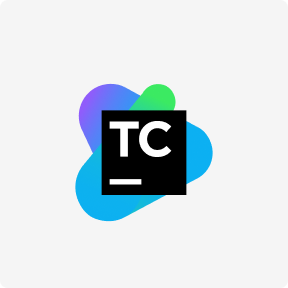Best of 2021 7 Popular Open Source CI CD Tools
Because there is no manual gate at the stage of the pipeline before production, continuous deployment relies heavily on well-designed test automation. Continuous deployment (the other possible “CD”) can refer to automatically releasing a developer’s changes from the ci/cd monitoring repository to production, where it is usable by customers. It addresses the problem of overloading operations teams with manual processes that slow down app delivery. It builds on the benefits of continuous delivery by automating the next stage in the pipeline.
The CI service runs automated builds on each push and pull request to help you catch errors before they become a problem. Drone CI is one of the best and most modern CI/CD pipeline tools. It not only provides Continuous Integration but also provides a distributed CI/CD pipeline. This feature is unavailable in other open-source best CI/CD tools like Jenkins. Drone lets you automate build, test, and release workflows using a powerful cloud-native pipeline engine. The scripts are grouped into jobs and are referred to as a pipeline.
Automation Testing Advisor
It includes support for advanced deployments like canary, blue-green, and experimental releases with the ability to easily track builds and releases across your organization. Google Cloud Build is a fully-managed continuous integration and continuous deployment (CI/CD) service that builds and tests your code on every push and pull request. It lets you build your app with speed so you can iterate faster and detect and fix bugs early. The service also integrates with existing dev practices and cloud providers so you can continue to use the tools you love.
With FinalBuilder there is no need to edit XML, or write scripts. You can define and debug build scripts when it schedules them with windows scheduler, or integrate with Jenkins, Continua CI, etc. Since Terraform works with all the major cloud providers, it is cloud agnostic. The documentation on Terraform providers and modules is maintained at the Terraform Registry. Available for MacOS, Windows, and Linux platforms, Jenkins has a strong community and a vibrant plugin ecosystem of over 1500 plugins. It is open source, free, robust, and extensible, which is why it is a favorite for large organizations and startups alike.
Development
A next generation CI/CD platform designed for cloud-native applications, offering dynamic builds, progressive delivery, and much more. The “CI” in CI/CD generally alludes to developers’ continuous integration and automation interaction. Effective CI means new code changes to an application are routinely assembled, tried, and converged to a common vault. It’s an answer to the issue of having such a large number of parts of an application being developed without a moment’s delay that could struggle with one another. Otherwise, it might make more sense to craft your automation scripts from scratch if the installation requires too much time, effort, and other technologies.
Within its suite, it offers three core tools — Docker Compose, Docker Swarm, and Docker Volume. Its built-in governance and control features enable you to delegate a broad range of activities to your teammates. ProsperOps offers a free savings analysis solution that pulls detailed data that would take a team at least a week to gather manually. CloudZero also provides timely and automated cost anomaly alerts to help you prevent issues from causing budget overruns. Yet, for that to work, your DevOps team needs the best CI/CD tools for the job.
Business Technology Establish the optimal tool
CircleCI also allows teams to set up automated workflows that can build, test, and deploy with ease, saving them time and preventing dev toil. Like Jenkins, TeamCity works with several popular tools to make a seamless mix for building and testing. It offers full transparency into your tests and their results, which you can use to create a “build chain”. This chain can then help structure your software delivery process for better developer productivity. With TeamCity On-Premises, you can choose to run builds on local servers, in a private cloud, or in public cloud infrastructure, with a combination of platforms as required. Deep integrations with major cloud providers allow you to scale your pipeline capacity on demand while keeping costs under control.
Continuous Integration (CI) is a practice used by development teams to merge the code to the central repository regularly. It allows many developers to contribute quickly and work on a single code base. To trim down your test cycles drastically, perform automation testing in parallel with LambdaTest’s Selenium grid. You may also like to read 16 Best Practices Of CI/CD Pipeline To Speed Test Automation. When opting for a CI/CD pipeline tool, it is essential to consider whether it offers on-premises and cloud-based options. However, it’s important to know about those CI/CD challenges and their potential solutions.
Common CI/CD Tools You Should Know
Well, the CI tools are great to build the artifacts deployed by your CD solution. CodeShip allows you to assign teams according to the roles you need — owner, manager, contributor, and so on — and give user permissions based on these roles. It even has a Parallel CI feature that supports running tests in parallel. Agile teams need automation tooling, especially when creating and working with CI/CD pipelines.
- There are many containerization tools available in the market, but Docker has stood the test of time.
- DevOps pipelines are toolchains that teams can use to automate tasks and provide visibility into the software development life cycle.
- It usually starts with specifying the base image of the OS, certain configuration and patching tasks, and finally, the source code.
- We’ve prepared a breakdown of the most popular CI tools to help you choose the best option for your team and project.
- They also allow dev teams to shape their workflow based on their needs, so they always have what they need to do their work properly.
- DeployBot is a build deployment management tool for manual and automatic releases.
The building infrastructure configuration and management can seamlessly be scaled to plugin development, testing, and release tooling. It ensures that deployment is reproducible, auditable, and revertible by following version control at every step. Buddy is a web-based CI/CD pipeline tool that can be used to build, test, and deploy websites and apps with code from GitHub, Bitbucket, and GitLab. Codemagic was the first best CI/CD tool designed specifically for Flutter testing. In addition, it enables it to create, test, and deploy native Android and iOS apps with Flutter modules. It follows a freemium pricing model where 100 builds per month are free for unlimited projects.
Salient Features of Azure DevOps
GitLab CI/CD is the CI/CD tool in the GitLab suite, which helps manage the software development life cycle for Git-based applications. The GitLab continuous integration (CI) service automatically builds and tests code pushed to the application, while the continuous delivery features automate releases. GitLab supports continuous deployment, enabling automation of the entire pipeline through to deployment. Software development teams may automate their build, test, and deployment processes with CircleCI, a continuous integration and continuous delivery (CI/CD) platform that is hosted in the cloud.
Harness can automatically detect quality and performance regression in canary deployments. It enables automatic deployments and rollbacks, with self-service deployments that allow managers to configure role-based permissions. In addition, it provides event-based triggers, real-time notifications, approval flows, IP allowlisting, and log analysis. The advantages of application security (AppSec) tool integration in the continuous integration/continuous delivery (CI/CD) pipeline are more useful when performed simultaneously. Development organizations are proceeding to move left to carry out security before the CI/CD pipeline. Although each effective software change can be quickly delivered to production with continuous delivery, not all changes should be dispatched immediately.
Services
As cloud-native technologies change, tooling and processes adapt, as well. Additionally, since cloud growth isn’t slowing down, you can expect that DevOps will continue to focus on and refine cloud-native https://www.globalcloudteam.com/ development. If you’re looking for ways to get stable builds and improve code quality, JetBrains offers a complete and well-integrated flow with a unified UI – the Space Git flow integrated with TeamCity.


